Fixing Your Slice or OTT Swing
- by Kelvin Miyahira
Most golfers start their golf careers by slicing or weak fading. Some fix their problems while others just manage their slice better. But for some golfers, the fix is almost as bad as the original slicing problem since it replaces one error with another or they lose a micro move and never get it back. At the very least, some of the slice cures become the source of nasty hooks or the need to reduce swing speed in order to keep it in the fairway. So why not go straight to the truth? This month let’s take a look at some of the popular slice fixes and later I’ll go into deep root causes of the slice and how you can fix it.
TRADITIONAL SLICE FIXES
Flatten backswing + OTT = “on plane.” NOT!
One of the most interesting fixes for slicing is the notion that if you take a flat enough of a backswing then swing over the top (OTT), you’re good to go since you’re “on plane.” Nutzos! The OTT swing is created when the right shoulder moves to internal rotation (IR) from the start of the downswing. The club might in an “on plane” position but the movements are not correct. The right shoulder in this type of swing will be moving to IR early and will trigger early right arm extension/right wrist flexion. In other words, it will set off an early release and flip.
Pausing or Slowing Down
For some teachers this is the answer to everything. Did this help Charles Barkley? He he he. If pausing helps, the “double pump” or pausing twice surely should have helped him twice as much. That motion might fake out Shaq in basketball but the golf ball ain’t falling for it.
If you can slow down and create a lateral bend like Kenny Perry, then great. Or if you can swing fast like Jamie Sadlowski and create lateral bend, then you’re not going to swing OTT. But the limiting factor is not your transition tempo; it is in your ability to create the right moves. So let’s fix the problem where it lies and not mask it by swinging slower. A slow OTT swing will definitely help you hit your slice straighter (because all things being equal, a slower swing produces less sidespin than a faster one) but is that the answer to great golf?
Continuous sliding or endless lateral motion
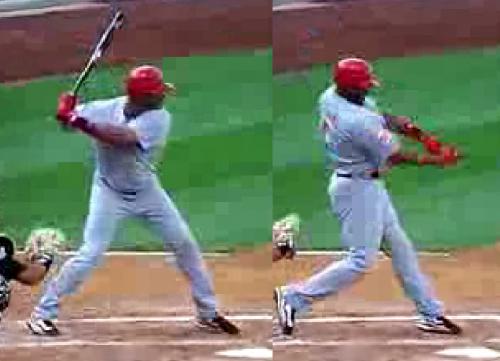
Some people believe that a continuous lateral motion is the path to a draw because they feel rotational movement causes OTT and a slice/fade. But maybe they are missing the whole point of lateral bend??? The day I see a home run hitter with a continuous lateral motion vs. a rotational hip movement, I’ll believe it’s a valid way to get the most power from your body (and no, George Brett eventually stopped his lateral shift and rotated). Here’s Ken Griffey flipped to be a right handed batter.
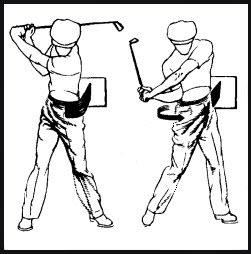
Ben Hogan did not say to slide continuously. He gave the image of rubber bands tied to a wall and his left hip to create rotation. Notice the right elbow is lower than the left and in front of the right hip in the image on the right (a strong elbow move). Also his right shoulder is lower than the left (lateral bend). Hogan may not have known what it was called, but he sure knew how to do it. See YouTube video of Hogan demonstrating it.
http://www.youtube.com/watch?v=eNlUKLPFwQE
Perhaps the notion of sliding is a really good way to fix what is assumed to be the error in spinning out or too fast shoulder rotation. If you slide instead of rotate, it will surely reduce the rate of rotation and therefore your club head speed. But is the problem really excess or too fast rotation? What are the tour pros doing to rotate so fast and generate a lot of club head speed yet they don’t swing OTT?
Keep your chest pointed away from the target
This idea is along the same lines as the previous and the next one. The thought of starting your downswing with your arms while keeping your chest or shoulders from turning is a popular fix as well. So you’re going to swing with your arms? This will reduce swing speed and therefore reduce amount of slice but ultimately results in you playing golf at a diminished level.
DROP YOUR ARMS
This is an old swing of Charles Howell III. It really is a disconnected arm drop away from his body rotation. If you drop your right elbow straight down, the arms will fall behind the body and get stuck requiring a stall to “throw” the club back down in front. So this is better than swinging OTT, but it will give you another problem to deal with.
Throw Arms Out
According to some experts, this will fix a slice. By throwing the arms out (some call it throwaway) along with the continuous slide, this will negate the effects of an OTT swing. Maybe it will but isn’t that like exchanging your old Volkswagen bug for a Geo Metro?
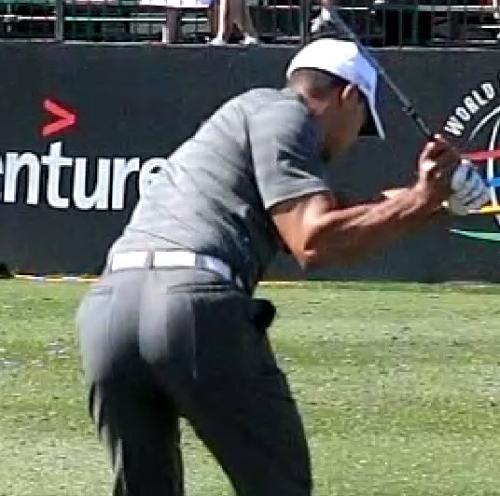
Is Tiger using a throwaway? Just look at his right bicep and forearm muscles bulging and you can tell he’s holding lag, not throwing it away.
Close your stance
Wow, now here’s a real doozie. Closing your stance presumably will slow down your hip rotation and give you more time to drop your arms/club into a flatter plane. What will stop your shoulders from rotating over?
Hit on a Sidehill lie
Really? This will magically change your steep, OTT downswing into a flatter one?
Open clubface twirl
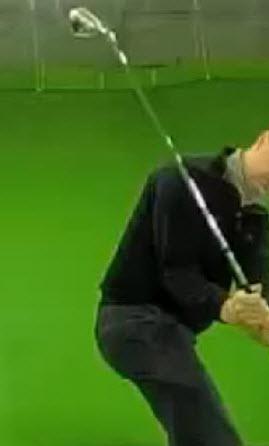
Some people recommend an open face twirl of the club to flatten the downswing. They cup (extend) the left wrist more (thinking they are Hogan. NOT!) and this opens the clubface. By doing this, you will be forced to flip/roll your release to even have a chance of squaring the clubface up.
Fix path
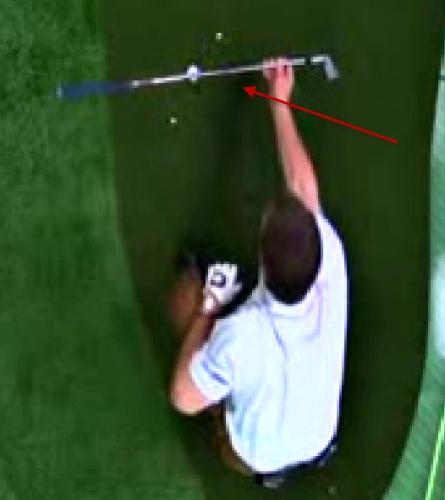
Here’s Michael Breed showing how to fix your slice by just changing the path. He has two tees; one on the outside of the ball line and one on the inside showing you the path of how to swing from the inside. Yes, makes sense once you get everything else right. But if you’re still swinging OTT, what difference does it make?
WHAT ARE TRUE CAUSES OF THE SLICE AND OTT SWING?
Okay, enough of the Band Aid fixes to slicing, what are the true causes of the OTT swing and consequently the slice? The true causes of a slice or OTT swing points back to early Posterior Pelvic Tilt (PPT – to be explained later in the article), abdominal crunch, incorrect weight shift movements, internal rotation of the right shoulder (arm wrestling movement) and an open clubface. So let’s take a look at these movements in greater detail.
Judo Chop!
Really Austin Powers, there’s no such thing as a judo chop. But it is a good analogy for an OTT chop swing.
If you performed a judo move called ippon seoi nage to throw your opponent over your right shoulder, these are the movements you would use. Interestingly, this judo throw has all the bad movements an OTT golf swing has. Thus, while it may be an athletic maneuver for judo, using these movements in golf will produce the steep, OTT downswing with an “out to in” swing path and a clubface that stays open. So let me break this down into its component parts.
APT to Early PPT
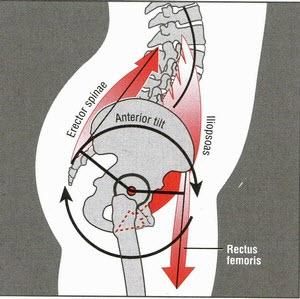
Anterior pelvic tilt (APT) shown on the left is when the pelvis tilts forward and this causes an increase in lordosis.
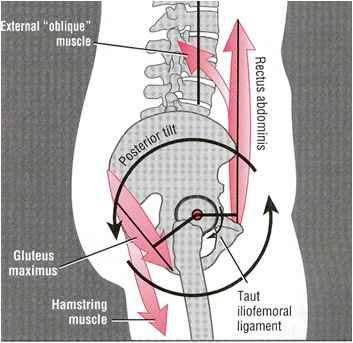
Posterior pelvic tilt (PPT) on the right is when the pelvis tilts back. This causes a decrease in lordosis. This is the power thrusting move that should occur just before impact in a golf swing.
Correctly done the pelvis should stay in neutral or can even move slightly toward anterior pelvic tilt on the backswing but not to maximum level. Here’s Gary Woodland showing the proper movements of staying in neutral and moving to APT in transition. PPT is a powerful move and should occur just before impact.
Incorrectly done, APT max is reached during the backswing and immediately moves to posterior pelvic tilt in transition. This causes the hips to rise in transition vs. dropping.
This can be seen more clearly from target line view.
By rising up in transition and moving to PPT, this sets off a chain reaction with the right hip rising up inhibiting lateral bend on the right side. It actually triggers an opposite or left side lateral bend that fires the right shoulder outward. Given that this is a very powerful move, how would you just flatten your plane as your instructor asks? Perhaps this error needs to be addressed if progress is to occur.
Ab Crunch

As this image shows, the rectus abdominis firing will tilt the pelvis back in PPT and pull the head down toward the ball. Thus, it is a key component in the OTT swing. Also, the external obliques will fire and this causes rotation of the upper body.
Thus when you see an ab crunch/PPT move early, the head dips down and toward the ball while the right shoulder rotates out.
Notice Tiger’s head does drop down but it also moves away from the ball vs. toward the ball as in the ab crunch move.
Reverse Weight Shift on Downswing
Not all OTT swings have this reverse weight shift. A person can have a great weight shift and still swing OTT. So this is just a special case.
Here’s Martin Laird with a great rotation and not much lateral motion.
This is the one situation where one needs to feel some weight shift. In this case, there is a reverse weight shift to the rear foot at the start of the downswing. But this is not the real root of the problem either. See below.
Backswing Internal Rotation of the right hip or holding IR
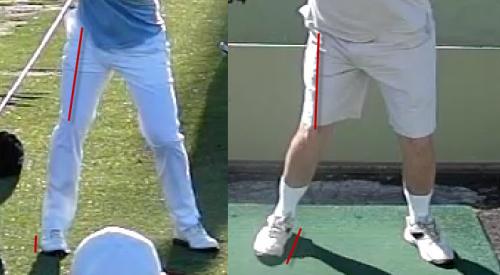
Yikes! This is one of the most often prescribed pieces of advice that just destroys golf swings and sets up an OTT swing. As you can see with this slicer, his right knee is so kicked in on the backswing it can’t help but fire incorrectly.
Early Right Shoulder Internal Rotation (IR)
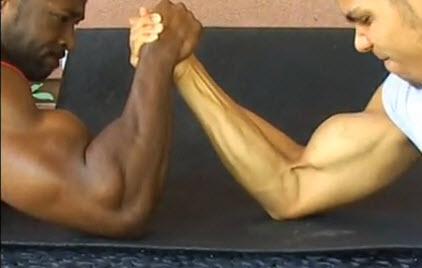
Another way to describe the early right shoulder IR is to imagine yourself arm wrestling. You might have a lot of power to defeat your opponent with this strong move, but it is entirely wrong for a golf swing.
OPEN CLUBFACE

A huge factor in the slice is having an open clubface. Whether the open clubface comes from a weak grip, too much left wrist cupping (extension) somewhere during the swing or incorrect transition, the clubface is going to “help” to create the slice.

Here’s the clubface opening in transition. It’s almost a done deal to slice city from here.
Lob Release
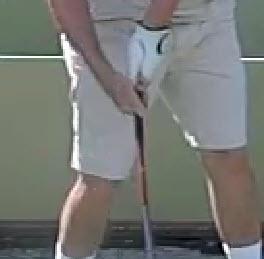
Slicer’s use a release which is a combination of massively open clubface along with an out-to-in path flip with no roll. This is perfect for hitting lobs and bunker shots but for the rest of the shots you already know what it does.
THE REAL SLICE FIX
If you want to know what is right in a golf swing, you can pick up any golf book, magazine or DVD and see what’s right. But how does that tell you what you need to do to fix the errors in your particular swing? In other words, what good is a map if you didn’t know where you were to begin with? Which way would you drive to reach your destination?
Once you figure out where you are, you can then start a new path toward a better swing. From the teaching perspective, while there are absolutes of right and wrong in the swing, there are no absolutes in what is taught. If there is a rule of thumb, the “fix” must be exaggerated to the degree in which the student is in error.
For example, if I have a student with an open clubface at the top of the backswing that’s only off by five degrees vs. off by 45 degrees, the fix prescribed would not need to be as severe. From the student perspective, the feel of it though, regardless of severity, will always be extreme. And errors as well as fixes must always be tracked by video since feel is not reliable.
Taken a step further, the images of what is right for you need to be tailored as such.

So if your clubface looks like this.

The image you need to have at the top of the backswing is this.
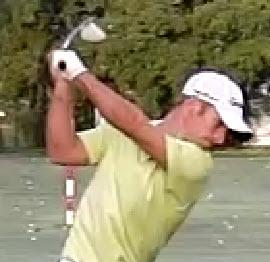
Because trying to do this is like having someone tell you how to get to the Grand Canyon when they don’t know if you’re driving in from Nevada, Colorado, Idaho or Mexico. Yes, we know where we want to go, but which direction should we drive to get there?
With that in mind, the clubface positions need to be addressed first and gotten under control before body movements can be fixed.
STRONG GRIP
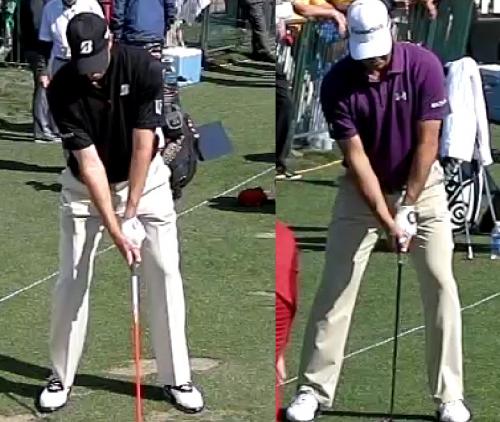

Copy Matt Kuchar’s strong grip instead of Gary Woodland’s weak grip. Unless you are strong enough to hit with an extremely bowed/supinated left wrist/forearm position, you should err on the side of a strong to extremely strong grip.
Closed Clubface at top
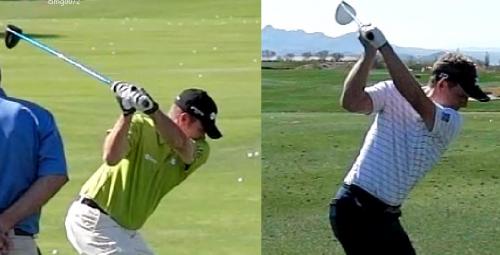
A strong grip plus a bowed or flat left wrist at the top of the backswing should help close the clubface. Also, keep in mind, a closed clubface + flip = hook. Square or open clubface + flip = straight or weak fade. Ultimately the goal is not to flip so when you start hooking, it’s time to look at your release pattern.
Close more in transition
Watch as Martin Kaymer’s clubface closes in transition.
Refer back to lag articles for more detailed information on all the moves.
/old/lifestyle/health_and_fitness/2011-11-pga-tour-clubhead-lag-part-2.html
Keep Closing
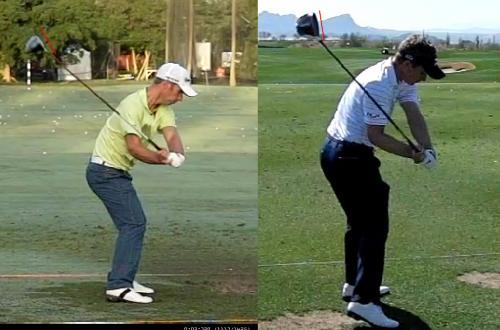
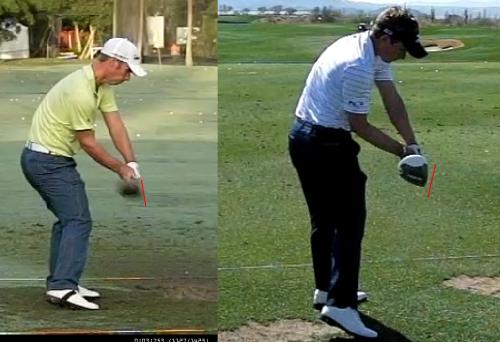
We have been instructed over the years to be wary of a closed clubface and the positions we have been shown are always way more open than what the better tour pros do. Notice the difference in clubface position of Richard S. Johnson and Luke Donald in these two key positions. Wouldn’t you rather copy the #1 player in the world?\
Changing Plane, Path and Release Style
Radical changes in plane and path are required to fix the OTT slice swing. One major point worth noting is that when changing from out-to-in path to in-to-out path, the clubface will tend to be MORE OPEN! If one does not realize that, it makes no sense to even try to fix the path because a push slice would be worse than an OTT pull slice. At least the OTT pull slice has a chance of ending up where you’re aiming vs. the push slice will end up in the next county.
Flattening the Plane
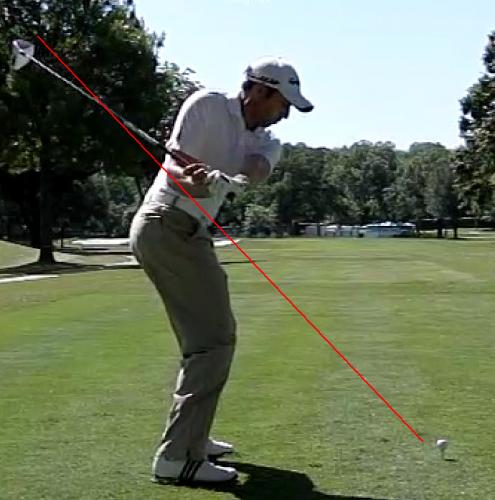
You can flatten the plane by lowering your entire club/hands/arms and look like Sergio.
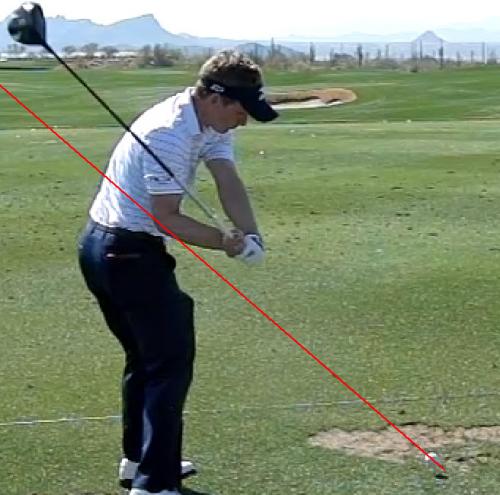
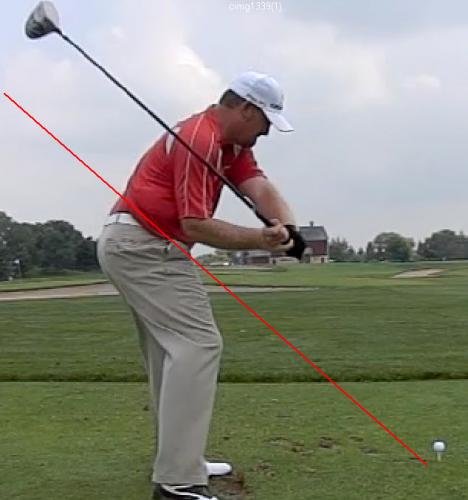
Or you can pull the right elbow forward + right shoulder external rotation and get the plane flattened as Luke and JB do.
Early Ulnar Deviation/right forearm pronation/right wrist extension
Luke Donald path and roll
Donald’s club is slightly under the plane which matches his rolling release to produce a 10-15’ draw on his iron shots. Early movement toward ulnar deviation is what causes this slightly early release. This is why he does not have as much lag as say Tiger.

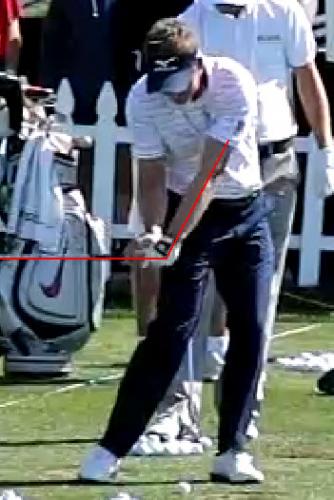
This along with the other two mirrored motions of the left supination/right pronation of the forearms and left flexion/right extension of the wrists help to produce a rolling release draw. This is going to give you the best possible chance of fixing your slicing patterns. Once you have these patterns ingrained, you should be ready to tackle the difficult body movements.
Impact Snap use to develop rolling release
For those of you that own an Impact Snap, you can use it to learn an in-to-out path and rolling release like Luke (notice I did not say flip/roll release which would be far worse).
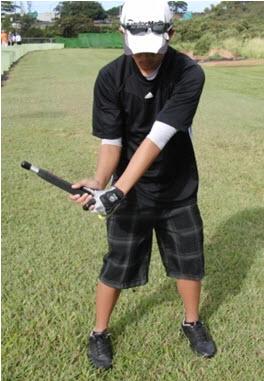
Hold lag till here.
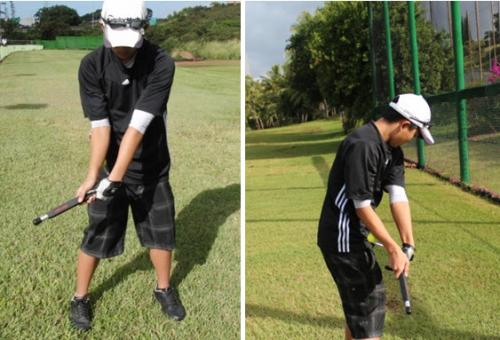
Then start to release a little earlier (UD and left forearm supination) and have the ball touch your arm when your hands are at your right pants pocket.
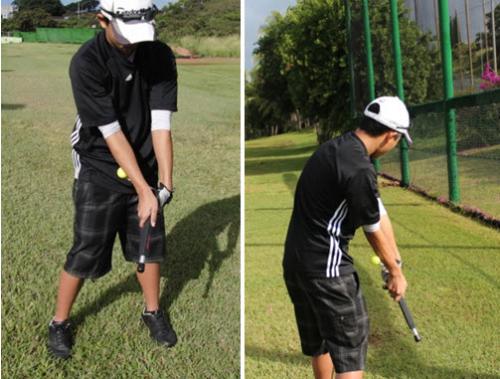
While the ball is still touching your right forearm, continue to supinate your left forearm (left palm faces up) like Kyle is showing.
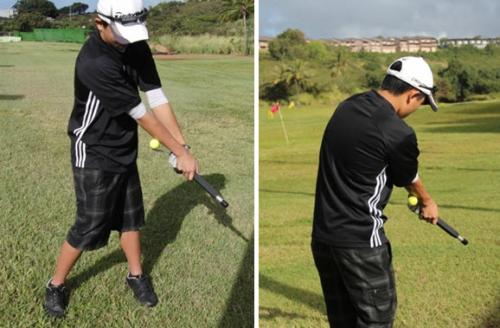
The follow through should look like this. The ball should keep touching your right forearm while you continue to roll the forearms. This will help you avoid turning the release into a flip/roll. Also, sense the in-to-out path that is created with your hands that will counteract the natural tendency you have to swing out-to-in.
CHANGING BODY MOVEMENTS
Keep Pelvis in neutral on the backswing
The biggest flaw one can make is to reach early APT max on the backswing which causes early firing off PPT or the judo throw. Therefore you have to learn to control the movements of the pelvis to do this.
One very easy way to learn this is by doing a yoga exercise called “cats and cows.”
http://www.youtube.com/watch?v=LodlEH6TluM
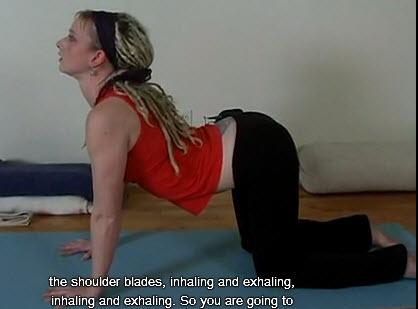
In the cow position, your pelvis is tilted down in APT max. This is to be avoided on the backswing and one should try to stay in neutral as she explains in the beginning of this video.
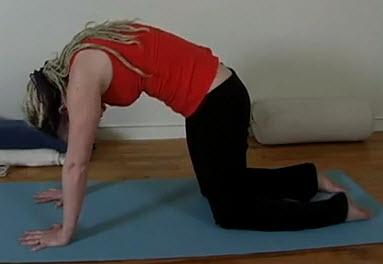
In the cat position, your pelvis is in PPT. Doing these yoga exercises can be wonderful for your back as well as teach you to be able to control your pelvis.
APT in Transition
Once you become aware of the pelvis’ movements, train yourself to APT in transition. This should trigger the beginning of the downswing, proper weight shift and open the possibility lateral bend to occur.
Avoiding the Ab Crunch
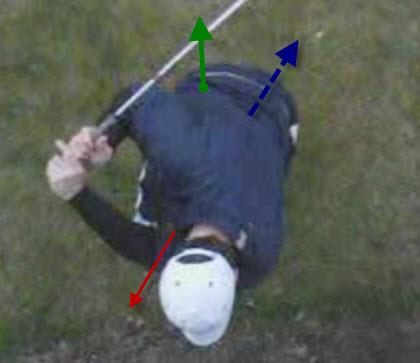
To visualize this, let’s take a top view. I’ve got three different colored arrows drawn here. The red line approximates the incorrect judo throw/ab crunching move that will cause the OTT. The green line represents the correct direction of lateral bending of the spine. But knowing that might not be enough to correct your OTT swing. You will also need to counteract the ab crunch direction flaw by trying to bend your spine backward in the direction of the blue line in transition. This should stretch your abs instead of contract your abs and train you to contract your spine muscles in transition.
Rickie Fowler’s movements would be a great image for you to have. His head and spine bend backward or away from the ball in order to enhance and exaggerate the lateral bend. This is like bending in the direction of the blue arrow in the picture above. If not, the ab crunch would still take over and you’d still be swinging OTT.
Shoulders Tilt not Turn
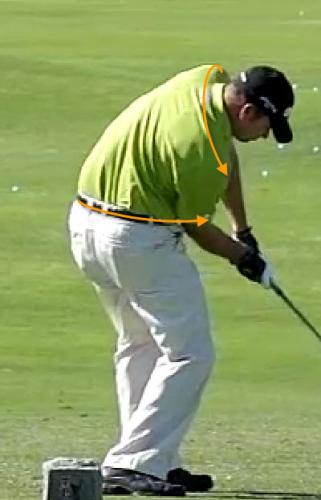
Shoulders need to be given a role. They should tilt. Along with other moves of lateral bend, they need to tilt powerfully vs. their normal OTT pattern of rotating out and around.
LEARN DIFFERENCE BETWEEN RIGHT LATERAL BEND AND USING OBLIQUES
A key point in understanding the OTT swing is that there is no lateral bend on the right side. This keeps the left shoulder lower while the right shoulder rotates high and over toward the ball. Also, the obliques are the prime movers in this swing and are not anywhere near as powerful as leg/hip/lower spine movements. Change it to a right lateral bend and much of your troubles will go away. For more details on lateral bend read /old/lifestyle/health_and_fitness/2010-04-spine-engine-swing-lateral-bend.html
Learn to get dual external rotation in hips
Remember that a strong right hip/leg fire at the start of the downswing will inhibit lateral bending. So that’s one good reason to try to get dual ER.
Also if you can pull the left side of your body away from the right and create a stretch in the hip/legs, you will create rotation plus set off a stretch shorten cycle for another firing. This means moving to dual ER/abduction before moving to IR and adduction. For more details, read hip turn part 2 article.
/old/lifestyle/health_and_fitness/2011-04-whats-a-hip-turn-part-2.html
SPINE BENDING EXERCISE
Try this simple exercise to heighten your feel for proper spine bending and shoulders tilting.
- Put the club behind your back and be sure it’s a few inches below your shoulder joints.
- Turn to complete your backswing.
- Then, without allowing any “shoulder turn,” bend your spine so your right shoulder tilts lower than your left (at finish of backswing the right shoulder is higher).
- Once you feel your spine bend and shoulders tilt, you can turn your shoulder through being sure to work your right shoulder under in a tilted way.
OTT swingers should take some time to train these movements and develop better arm/club movements as well as better body movements. But even for those that have fixed their OTT or slice swing many years ago, are the fixes hindering further improvements? Maybe it’s time to take a hard look some of these traditional fixes that are in your swing and lift the concrete ceiling on your game.
http://www.youtube.com/watch?v=Sq0SrMj1YaM&feature=youtu.be
On another note, if you have questions about the swing please go to http://www.jeffygolf.com/ and post questions there. I will be checking in and answering questions for everyone.